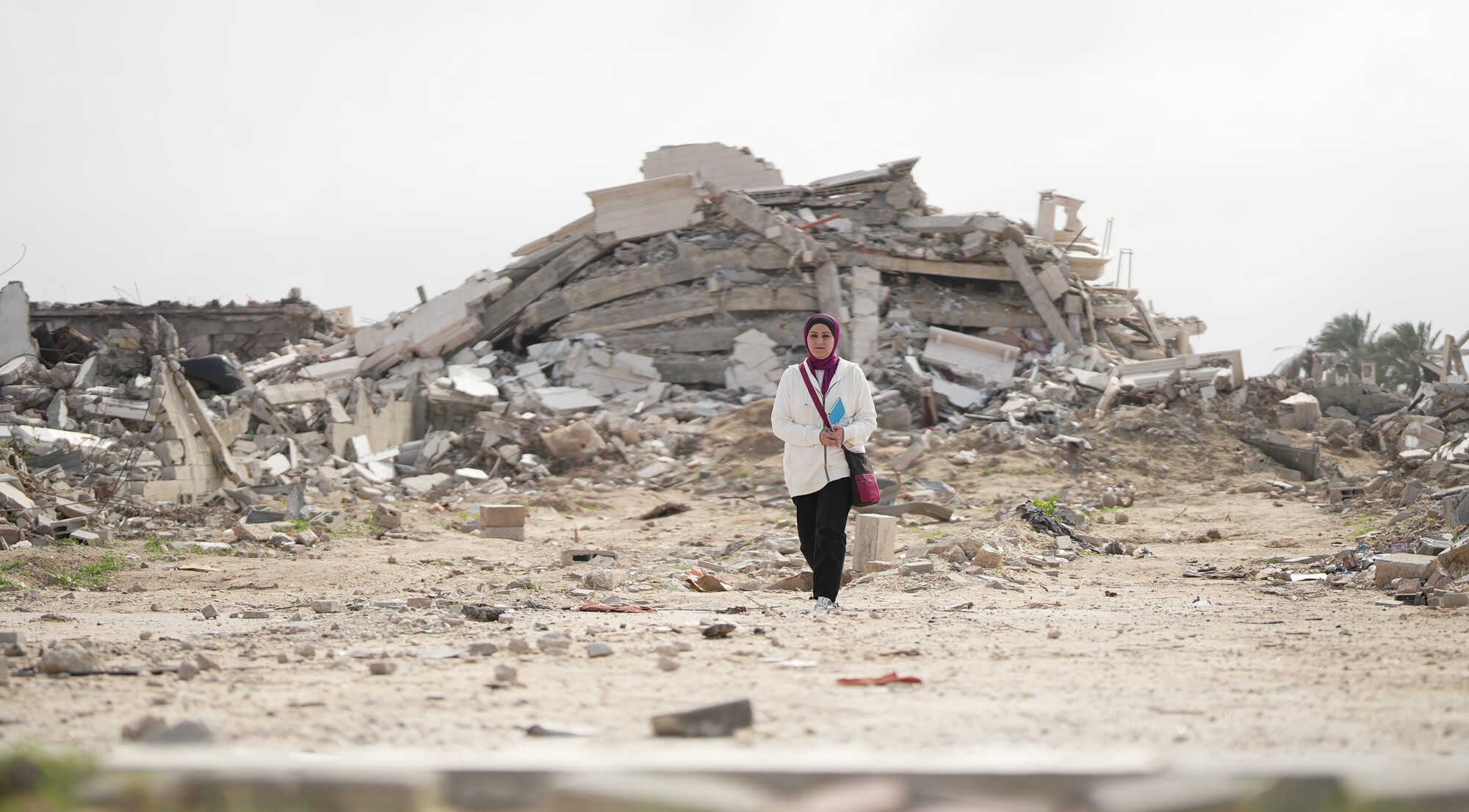Twenty-five-year-old Anju works in a factory in the bustling capital of Bangladesh, where she makes 37 cents an hour sewing together sweaters sold in Australian shops. The sweaters made by Anju eventually make their way into the wardrobes of thousands of everyday Australians.
But not before Anju has toiled six days a week, sometimes from 7am until after 11pm, to earn at most just $107 a month. There are times Anju’s pay is docked if she fails to meet unrealistic targets, and other times the work dries up and she is sent home – she once took home less than $14 for an entire month.
No matter how hard Anju works, her meagre pay is not enough to meet the costs of even the basics – and her family is falling into spiralling debt.
Anju and her husband live in a slum. They share their compound – which has one kitchen, two toilets and two bathing areas – with seven other families. The rooms are hot, dark and cramped. Running water is available only three times a day, for just an hour each time. The crowded slum is unsafe, and no place for Anju’s eight and 10-year-old daughters – especially when she works such long hours. For this reason, Anju has made the heartbreaking decision to have her children live with her in-laws, nearly 200km away in a remote village. Anju now sees her two daughters just twice a year during national holidays. She is trapped – in a cycle of poverty and in a life without her children.

During a trip to Bangladesh late last year, I visited the homes of women just like Anju. Sadly, their stories are all too common – families ripped apart, women sleeping on concrete floors after long hours at work and others going without enough food as they try to support family members and stretch their pittance of a pay to the next month. Women being paid poverty wages that force them to live in shocking conditions.
Oxfam has just released research that exposes the shameful truth – a tiny portion of the retail price of clothing sold in Australia goes to the wages of women like Anju.
The research, conducted for Oxfam by Deloitte Access Economics and the first of its kind in Australia, shows that on average, just four per cent of the price of a piece of clothing sold in Australia goes toward workers’ wages in factories across the globe.
In Bangladesh, where wages are extremely low, the situation is even more dire – just two per cent of the price of clothing sold in Australia goes to the wages of women like Anju.
But in a fashion industry where the turnover in Australia last year was $27 billion – and which is growing at an annual rate of four per cent – it’s possible for the women who make our clothes to be paid a living wage. A wage that covers at least essential needs including food, housing, healthcare, clothing, transport, education, and some money for savings and unexpected events. A wage that allows these women to live a decent life.
The Deloitte research estimates that even if big companies passed the entire cost of paying living wages to all workers on to consumers, it would increase in the price of a piece of clothing sold in Australia by just one per cent. That is just 10 cents for a $10 T-shirt.
Oxfam believes that with the profits being made by the factory owners, wholesalers and retailers of the fashion industry, it is more than possible for the cost of paying living wages to be absorbed in these supply chains.
It is time for the leading fashion retailers known and loved by Australians – the companies behind brands such as Kmart, Big W, Bonds, Cotton On and Just Jeans – to step up to their responsibilities to the women making their clothes.
Oxfam has been working towards improving standards in the garment sector for more than 20 years. Our work has shown that when people are rightly outraged by the unfair treatment of workers like Anju – and tell the brands they love that they expect better – change can happen.
After the tragic Rana Plaza factory building in Bangladesh collapsed in 2013, killing more than 1100 workers, Australian consumers demanded that companies act. In response, many of the largest garment retailers in Australia joined the ground-breaking Bangladesh Fire and Building Safety Accord.
Similarly, Australians have demanded better transparency from big brands and joined Oxfam’s call for factory lists to be brought out of hiding. Over the past two-and-a-half years, 12 of the biggest brands operating in Australia have published the majority of their factory locations online – keeping them accountable for the conditions where clothes are made.
Despite these positive changes, poverty wages are still holding back the women who make our clothes. The time has come for this rigged system’s gross exploitation of workers to stop. Big brands must publicly commit to paying a living wage to their factory workers – and publish a strategy outlining how this will be achieved and by when.
Anju, denied an education after her father died when she was just a baby and entered into an arranged marriage as a young teenager, had no big dreams about her future growing up.
But she does have hope for her future – and that of her daughters. She told Oxfam this year:
“Everyone wants their children to have a bright future. If my daughters have a better education, maybe they will have a good job – and they would have a brighter future.”
Surely Anju is not asking too much.
Helen Szoke, Oxfam Australia Chief Executive



